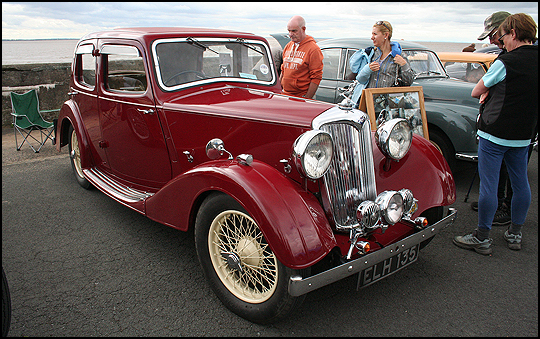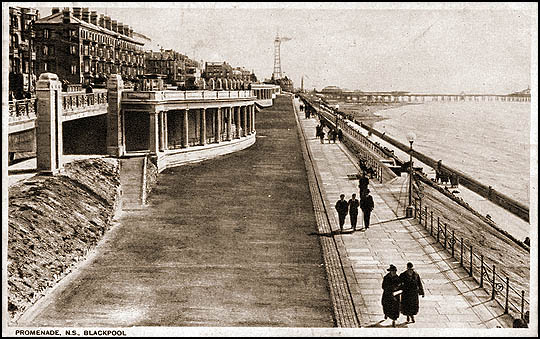The other day Fran noticed an announcement in the local paper about a classic vehicle rally at Fairhaven Lake, Lytham St Annes. I love any chance to wallow in a bit of nostalgia, so we shrugged at the weather and ignored the threatening low clouds and made our way in my own somewhat less than vintage Mazda to find a large display of cars, motorbikes and dolls prams. I'll concentrate on the cars...

The lovely Ford MkII Zephyr was amongst the first to catch my eye. I have a strong liking for Zephyrs as my Dad had three MkIVs and both my Grandad and I had a MkIII at various times. The Mk II was one of the Three Graces of Consul (basic model), Zephyr (mid range) and Zodiac (executive model). The name Consul got dropped from the MkIII and MkIV ranges, being instead applied to the MkI Cortina and the stylish Ford Consul Classic, the first British car I remember having twin headlamps. The name then disappeared until the Zephyr and Zodiacs were replaced by the first Ford Granada, which had a Consul as the basic model.

Oh and these are just lovely! The second half of the 1940s saw the Bentley MkVI in production as the first luxury car of the post-war period. I've never had one sadly, though I have driven one on very rare occasions as I spent six months in the early 1970s working in a photographic studio that had one for wedding work. The gear lever sat in the door well on the driver's right side and the steering wheel included levers for advancing or retarding the carburettor timing and also an early form of cruise control. A real head turner. A real pocket emptier... the one at the studio only did 8 miles per gallon!


Late 1950s or early 60s Ford Anglia. This was the two-door version of the Ford Prefect. There were few other external differences between the two cars, the rear light cluster was the only way of telling them apart, other than counting the doors! One of the first Fords to have flashing indicators fitted. They were worked from the tiny wing-like thumb switch on top of the steering wheel hub, which you pushed to either side to confuse fellow drivers, who up until then had been used to drivers either sticking their arms out of the window or using the semaphore-like trafficators which popped up from the side of the car between the front and rear doors of most cars.

This is an interior view of a Standard. The company became part of the Triumph company but this late 1950s car is unusual for having no clutch. Despite the standard (sorry!) gear lever, it had a semi-automatic gear system. In common with all cars of the time, the headlight dip switch is a toggle foot switch high up on the left of the driver's foot well under the instrument display. To the left of the single dial is the heater control - a single knob moving from top (hot) to bottom (cold).


The Riley 1.5 touring saloon has a mascot depicting a skier which would definitely do damage to any unfortunate who might be hit and thrown over the bonnet... Lots of older cars had these mascots. You could even buy other designs to fit your car. Later, laws came out that any mascots fitted by manufacturers had to be safe from causing injury. Rolls Royce have a mechanism that causes their mascots to fall away, Mercedes ring mascots with the three spokes are sprung so they would fold flat (but are handy as a sighting device...) but mascots such as the famous leaping jaguar on... er... Jaguars, have just about died out altogether. However the legislation (Type Approval) seems to be now defunct and I've seen advice that owners can retrospectively fit mascots, but in so doing lay themselves open to legal action if the mascots subsequently cause injury. Don't take my word for it - if you fancy fitting a mascot, check out the current law!



A trio of Morris Minors. These sold in huge numbers and are a much-loved car even now. The forerunner of the Mini, the dashboard arrangement and interior trim is instantly familiar to anyone who had an early Mini, the single large dial for the speedometer, open shelving to the side of it, leather straps rather than solid handles to close the door. Though this open-topped example does have door handles on the inside rather than the early Mini's "bit of string". (They had a chord that hung over the side map pockets in the doors and the door was opened by grabbing and pulling the chord.) The second example is a Morris Minor Traveller - commonly used by company representatives, who as a body were called commercial travellers in the 1950s and 60s. The woodwork suggests the old shooting brakes of earlier decades and are part of the transformation of that type of car to the more modern estate car.

A Triumph Herald. I used to like these cars as they were uniquely shaped. The bonnet and wings are a single piece - opening the bonnet is a matter of swinging the entire front of the car upwards. It is hinged at the front, not the rear, so when it is raised, it forms a wall at the extreme front of the car and you can lean in over the wheels because the wings are not in the way. The suspension is such that when the car was jacked up the wheels didn't remain vertical but sort of droop...


The Vauxhall Victor F, made from 1957 replacing the chunkier Wyvern model with a car that leaned heavily on America for its styling, yet was designed in-house in Gt Britain. It had a 3-speed gearbox with steering column mounted gear lever and front bench seat. Compare the rake of the windscreen with more modern cars!


The Ford Cortina Club had a collection of mainly MkV Cortinas. There was one MkI, one MkII and a MkIV. Elsewhere amongst the cars was a MkIII. Dad had had a couple of MkIs and I had one of each of the MkIII, MkIV and MkV. My favourite had to be the MkIII of the early 1970s, a beautiful car.














